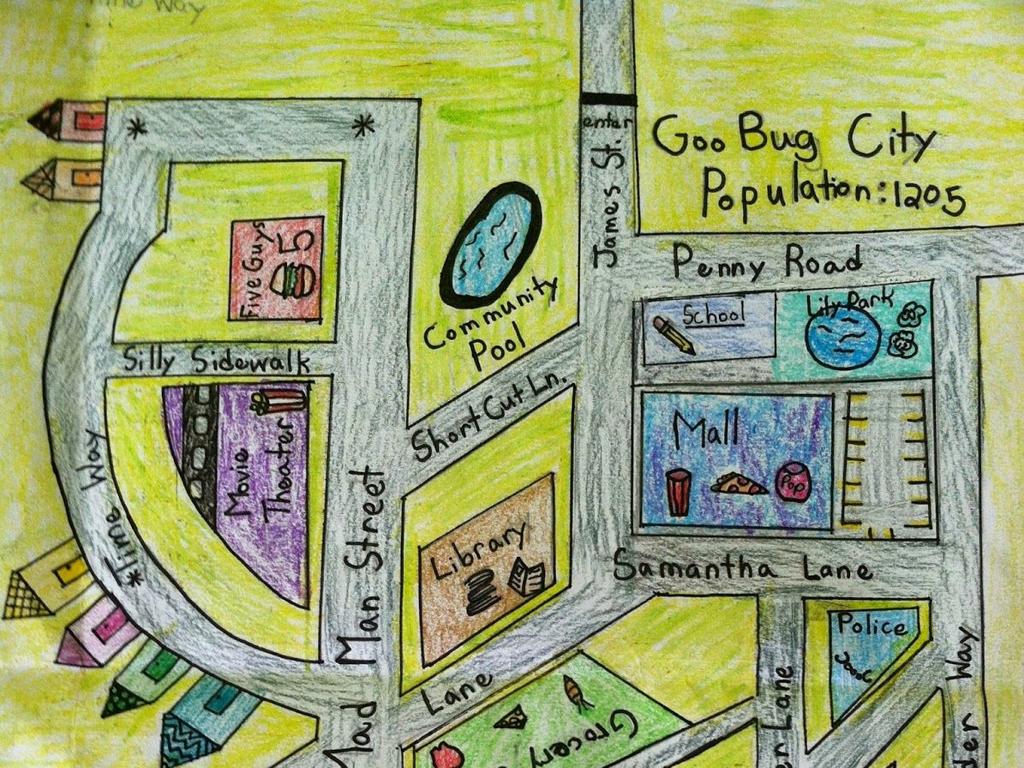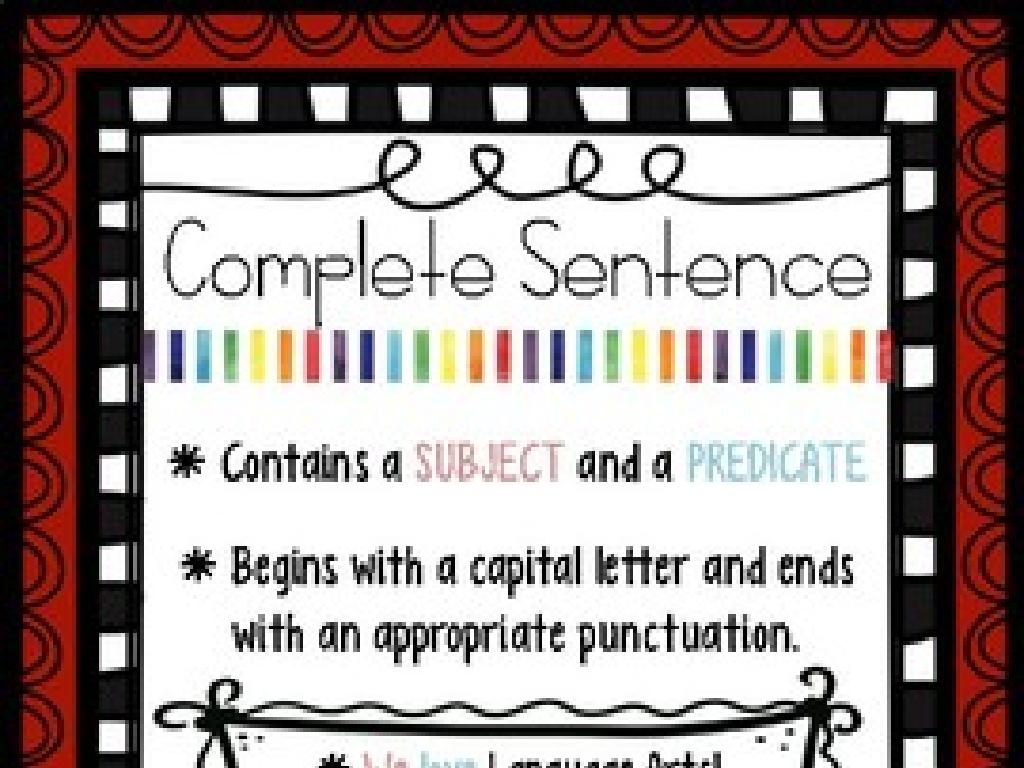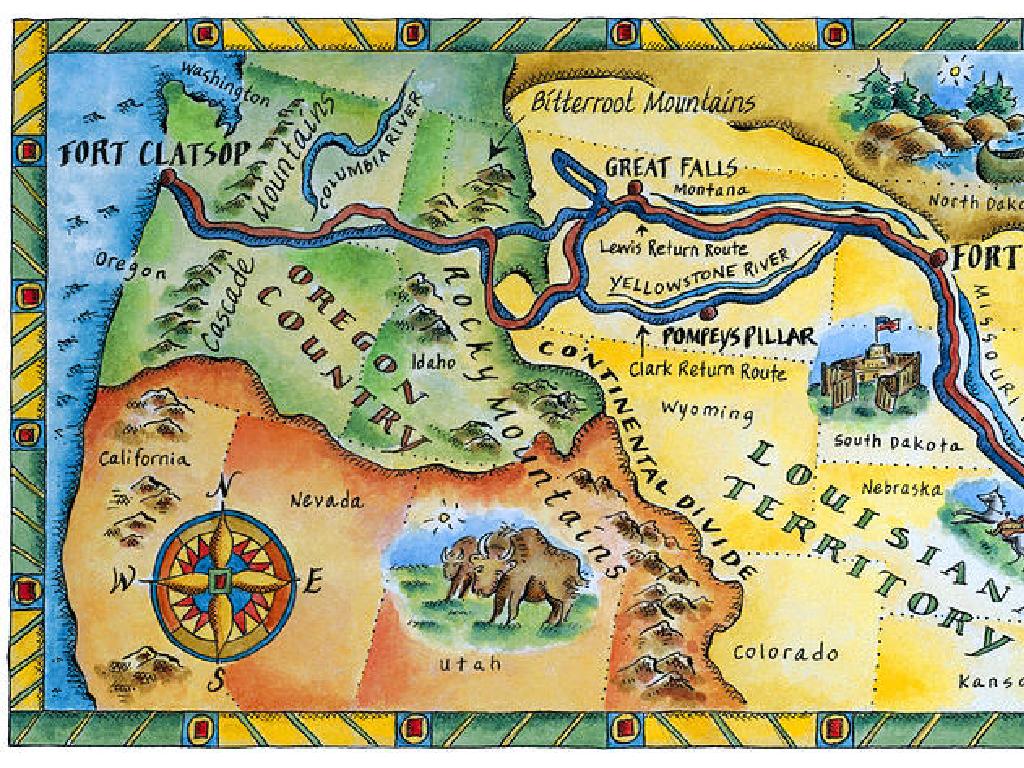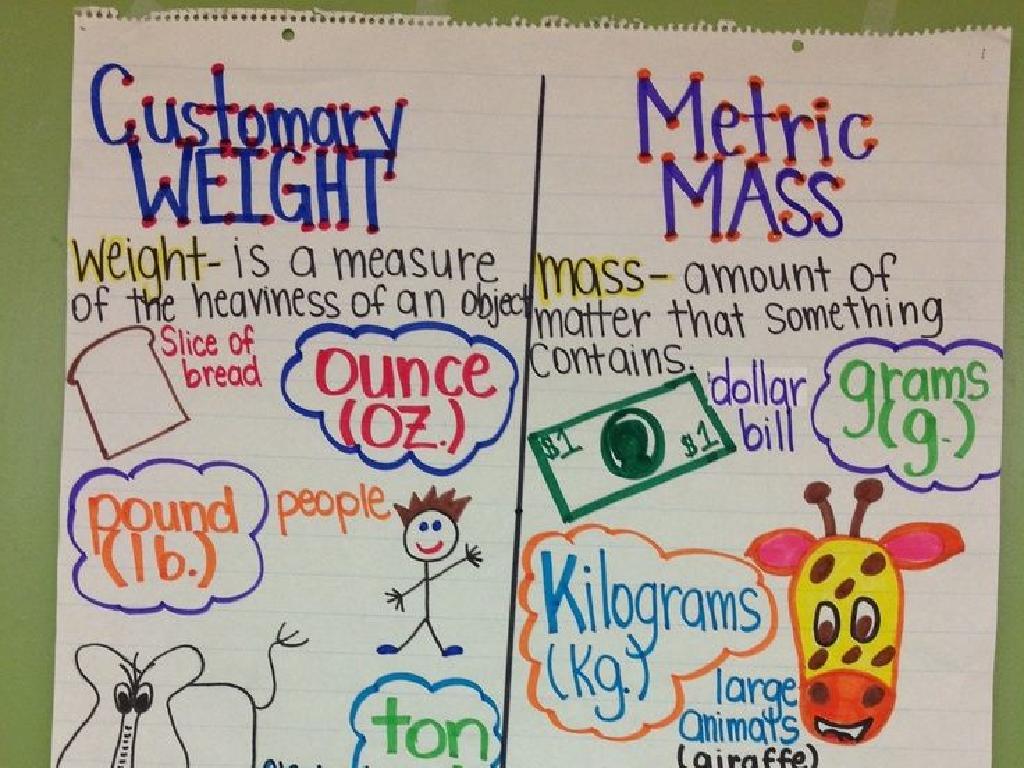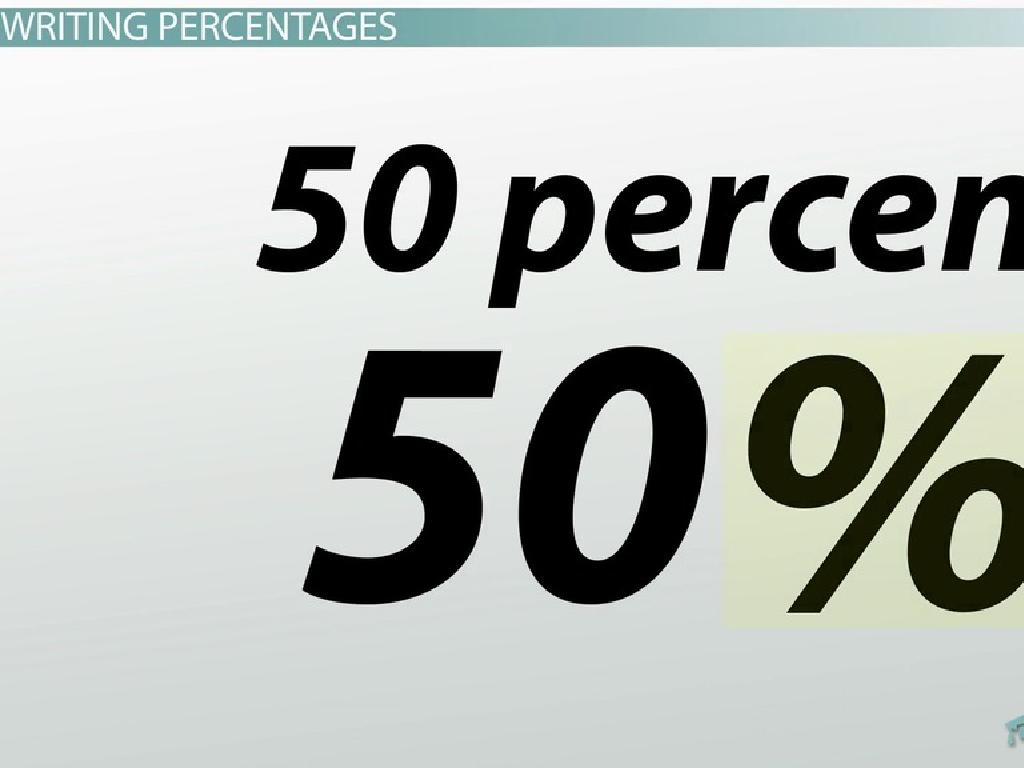Calculate Velocity, Distance, And Time Ii
Subject: Science
Grade: Seventh grade
Topic: Velocity, Acceleration, And Forces
Please LOG IN to download the presentation. Access is available to registered users only.
View More Content
Introduction to Velocity
– Understanding motion and velocity
– Motion is movement, and velocity is speed in a specific direction.
– Differentiating velocity and speed
– Speed is how fast something moves; velocity includes direction.
– Real-life velocity examples
– Examples: A car going east at 60 mph, a river flowing north at 5 mph.
– Calculating velocity
– Use the formula velocity = distance/time with direction to calculate.
|
This slide introduces the concept of velocity within the context of motion. Velocity is a vector quantity, which means it includes both speed and direction, unlike speed, which is scalar and only measures how fast an object is moving. Provide students with relatable examples, such as cars moving in a specific direction or rivers flowing at a certain speed, to illustrate the concept of velocity. Emphasize the importance of direction in distinguishing velocity from speed. Conclude by showing how to calculate velocity using the formula, incorporating the direction to reinforce the concept. Encourage students to think of other examples where velocity is used and to practice calculations with different scenarios.
Calculating Velocity: The Basics
– Velocity formula: V = d/t
– V represents velocity, d is distance covered, and t is the time taken.
– Distance (d): space traveled
– Distance is how far an object moves. Measure in meters (m) or kilometers (km).
– Time (t): duration of travel
– Time is how long the object takes to move. Measure in seconds (s) or hours (h).
– Units for velocity: m/s or km/h
– Common velocity units are meters per second (m/s) or kilometers per hour (km/h).
|
This slide introduces the concept of velocity and its calculation. Velocity is the speed of something in a given direction. The formula V = d/t is fundamental for understanding motion in physics. Emphasize that ‘d’ stands for the total distance traveled, while ‘t’ represents the time taken to travel that distance. Discuss the importance of consistent units when calculating velocity, typically meters per second for scientific purposes or kilometers per hour for everyday use. Provide examples, such as a car traveling 100 km in 2 hours (velocity = 50 km/h) or a runner covering 200 meters in 40 seconds (velocity = 5 m/s). Encourage students to practice with different scenarios to become comfortable with the formula and unit conversions.
Exploring Velocity: Distance, Time, and Graphs
– Relationship between distance & time
– Velocity = Distance ÷ Time. More distance in less time means higher velocity.
– Interpreting distance-time graphs
– Graphs show how far something travels over time. The steeper the slope, the faster the object.
– Calculating velocity using graphs
– To find velocity, measure the slope (rise over run) of the distance-time graph.
– Velocity’s role in everyday motion
|
This slide introduces students to the concept of velocity and its dependence on distance and time. Start by explaining that velocity is a measure of how fast something is moving and is calculated by dividing the distance traveled by the time it took. Use a distance-time graph to visually demonstrate how the slope represents velocity, with steeper slopes indicating higher speeds. Teach students how to calculate the slope of a line on a graph to determine velocity. Emphasize the practical applications of understanding velocity in everyday life, such as driving a car or riding a bicycle. Provide examples and practice problems to solidify their understanding.
Calculating Velocity, Distance, and Time
– Velocity calculation example
– If a car travels 150 km in 3 hours, its velocity is 150 km / 3 h = 50 km/h.
– Distance determination example
– With a velocity of 60 km/h for 2 hours, the distance is 60 km/h * 2 h = 120 km.
– Time computation example
– To cover 180 km at 60 km/h, time is 180 km / 60 km/h = 3 hours.
|
This slide provides practice problems to help students apply formulas for calculating velocity, distance, and time. For velocity, students will use the formula velocity = distance/time. In the distance example, they will rearrange the formula to distance = velocity * time. Finally, for time, the formula is rearranged to time = distance/velocity. Encourage students to set up the problems by identifying the given values and the unknowns, then solve for the unknown using algebraic manipulation. These examples should be clear and provide a step-by-step approach to solving problems in this topic area.
Class Activity: Velocity Calculation
– Measure distance using tape
– Record time with a stopwatch
– Calculate the toy car’s velocity
– Use the formula: velocity = distance/time
– Discuss results in groups
– Share findings and compare calculations
|
This activity is designed to provide hands-on experience with measuring distance and time, and calculating velocity. Students will use a measuring tape to determine the distance the toy car travels and a stopwatch to record the time it takes. They will then apply the formula for velocity (distance divided by time) to calculate the car’s velocity. In group discussions, students should compare their results and understand any variations. Possible activities for different groups could include varying the surface on which the car travels, using cars of different weights, or measuring over different distances. The teacher should ensure that each group understands the procedure and the formula for velocity. Emphasize the importance of accurate measurements and recording data.
Review and Q&A: Velocity, Distance, and Time
– Recap: Velocity = Distance/Time
– Velocity is the speed of something in a given direction.
– Ask: What questions do you have?
– Encourage students to ask about any part of the formula or concepts.
– Address student confusions
– Use student questions to identify common areas of confusion.
– Clarify misunderstandings with examples
– Provide clear, step-by-step examples to explain difficult parts.
|
This slide is aimed at reviewing the key concepts of velocity, distance, and time, and ensuring students have a solid understanding. Start by recapping the formula for velocity and its components. Open the floor for students to ask questions they may have about these concepts. Pay attention to the types of questions asked to identify any common misunderstandings. Address these by providing additional explanations or examples. For instance, if students are confused about how to calculate velocity when given distance and time, work through a problem step-by-step. Encourage participation by reminding students that questions are an important part of learning.
Homework: Mastering Velocity, Distance, and Time
– Complete practice problems
– Solve given problems to apply today’s lesson
– Study ‘Introduction to Acceleration’
– Read the provided material on acceleration
– Reminder: Bring a calculator
– Calculators are needed for velocity and acceleration calculations
– Prepare questions for next class
|
This homework assignment is designed to solidify the students’ understanding of how to calculate velocity, distance, and time. By completing additional practice problems, students will be able to reinforce the concepts learned in today’s lesson. Encourage them to read ahead on acceleration to prepare for the next class, as understanding acceleration is crucial for mastering the concepts of motion. Remind students to bring calculators as they will be working with numerical problems involving velocity and acceleration. Be prepared to address any questions students may have in the next class to ensure they have a firm grasp of these foundational concepts.

